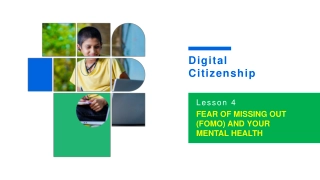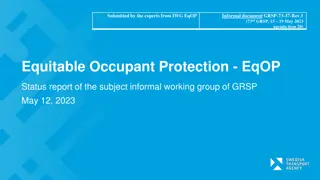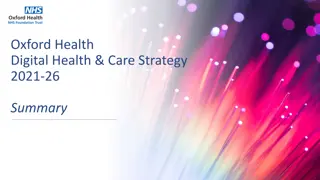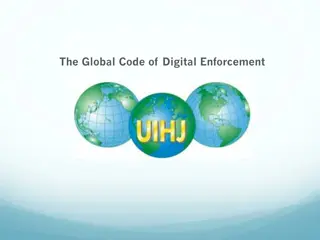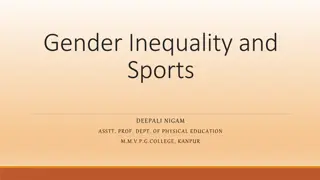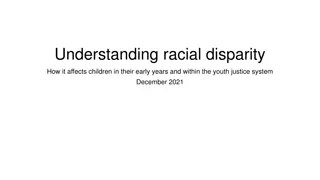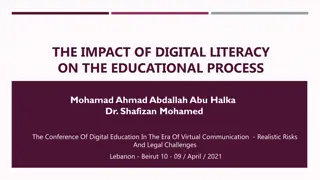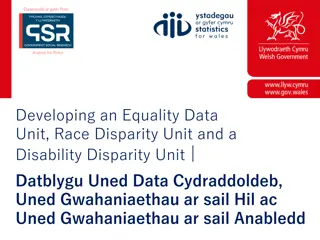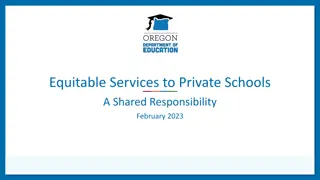Addressing the Digital Disparity in Education for Equitable Opportunities
Jagdish Yadav, Ph.D., an Education Sector Advisor in Toronto, discusses the digital divide in the context of educational equity. The presentation outlines the common dividers in Toronto, main reasons for the digital gap, educational realities pre and post Covid-19, and the significant impacts of the digital disparity on educational inequality and overall well-being. The content emphasizes the urgent need to bridge the digital gap for a fair and inclusive educational system.
Download Presentation

Please find below an Image/Link to download the presentation.
The content on the website is provided AS IS for your information and personal use only. It may not be sold, licensed, or shared on other websites without obtaining consent from the author.If you encounter any issues during the download, it is possible that the publisher has removed the file from their server.
You are allowed to download the files provided on this website for personal or commercial use, subject to the condition that they are used lawfully. All files are the property of their respective owners.
The content on the website is provided AS IS for your information and personal use only. It may not be sold, licensed, or shared on other websites without obtaining consent from the author.
E N D
Presentation Transcript
1 Bridging the Digital Divide for Bridging the Digital Divide for Equitable Educational Opportunities Equitable Educational Opportunities Jagdish Yadav, Ph.D. Education Sector Advisor Economic Development and Culture Division City of Toronto Jagdish.Yadav@Toronto.ca
2 Digital Divide in Toronto Digital Divide in Toronto Common digital dividers Digital Divide: The digital divide is the gap that exists between individuals who have affordable internet access and the skills to use modern information and communication technology and those who do not. Internet access No home internet access (2% 6%) Poor quality internet (Approx. 33% people have < 50 mbps speed) Hardware devices (computers, tablets, routers, phones) Students ill-equipped to continue learning at home (32%) Computer availability (0.7 per person vs 1.0 national average) Literacy (parental) 30.7% population is high school or less (25-64 age) Household income and living conditions
3 Main reasons for digital divide Main reasons for digital divide Internet access and quality Slow speed (38% households have speed >50 Mbps (CRTC recommended adequate speed) No home internet access Affordability 20.2% population below poverty line (< $47,026 for a family of 4) Cost of internet ($36 - $100 per month), Canada 5th most expensive out of 62 countries (Programs at $10/month available for low-income families; but are slow and not available to all such families) Hardware: computers/tablets/mobile phones/router Continuous technological updating Digital literacy skills Perceptions and trust (benefit, trust, security) Source: Mapping Toronto s Digital Divide, 2021, Ryerson University/Brookfield Institute
4 Educational reality before and during Covid Educational reality before and during Covid- -19 19 Before Covid-19 During Covid-19 Teaching/learning In-class, in-person Home, online, hybrid Student-teacher Interaction Face-to-face Remote via audio or video Learning enablers (e.g., computers, internet, space, instructors) Available in equal proportion to all students in school Not equally available to all students outside of school Personal support (e.g., mental health, nutrition, career counselling, academic supervision) Equally available to all as per need Not available equally Extracurricular opportunities Diverse opportunities available as per interest Available to only a small segment Educators/Teachers Balanced approach Stressed, budgets stretched, adaption challenges
5 Impact of digital divide/educational inequality Impact of digital divide/educational inequality Disproportionate loss of learning/increased achievement disparities Long-term adverse economic impact/individual earning loss Effect on household s ability to access critical services Adverse impact on mental, emotional and physical health
6 Disproportionate loss of learning Disproportionate loss of learning Percent of learning (Fall 2020) Student category Loss of learning 75 80 67 70 59 60 Predominantly students of colour 3-5 months 50 40 Predominantly white 1-3 months 30 20 10 All students (average) 3 months 0 Predominantly white students Predominantly students of colour All students Source: McKensey & Company, December 2020, COVID-19 and learning loss Disparities grow and students need help.
7 Estimated long Estimated long- -term loss of learning term loss of learning Student category Loss of learning Predominantly students of colour 3-5 months Predominantly white 1-3 months All students (average) 3 months Source: McKensey & Company, December 2020, COVID-19 and learning loss Disparities grow and students need help.
8 Estimated long Estimated long- -term earning loss term earning loss Student group Estimated earning loss (Over a 40 year working life) White $1,348 a year Black $2,186 a year Hispanic $1,809 a year
9 Efforts to Reduce Digital Divide Efforts to Reduce Digital Divide Mostly facilitating internet access & devices availability Examples: - Federal: Connecting Families Initiative, Digital Literacy Exchange - City of Toronto: ConnectTO, Digital Canopy (City-CISCO), Wi-Fi on Wheels, Internet Connectivity Kits (TPL) - Toronto School Boards: Devices and Wi-Fi (TDSB/TCDSB) - Corporations: Connected for Success (Rogers), Digital Canopy (CISCO) - Chicago Connected
1 0 Interventions can reduce learning loss Interventions can reduce learning loss Source: McKensey & Company, December 2020, COVID-19 and learning loss Disparities grow and students need help.
1 1 Key issues and challenges Key issues and challenges How to minimize the learning loss AND how to sustain and expand the initiatives? Gaps in governmental policy that are required to addressed? Many stakeholders involved suggestions to enhance collaboration among them to maximize outcomes? THANK YOU! THANK YOU!


